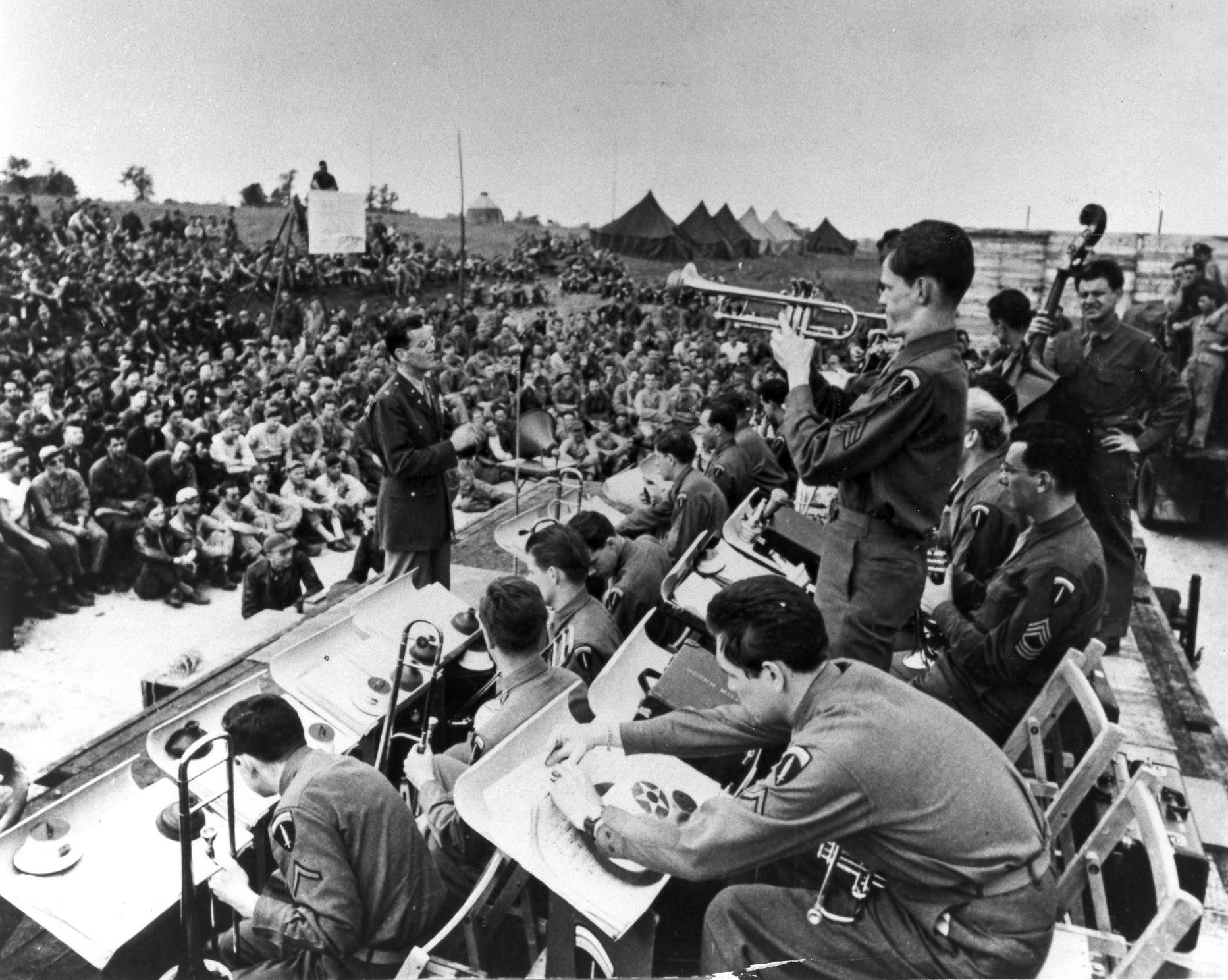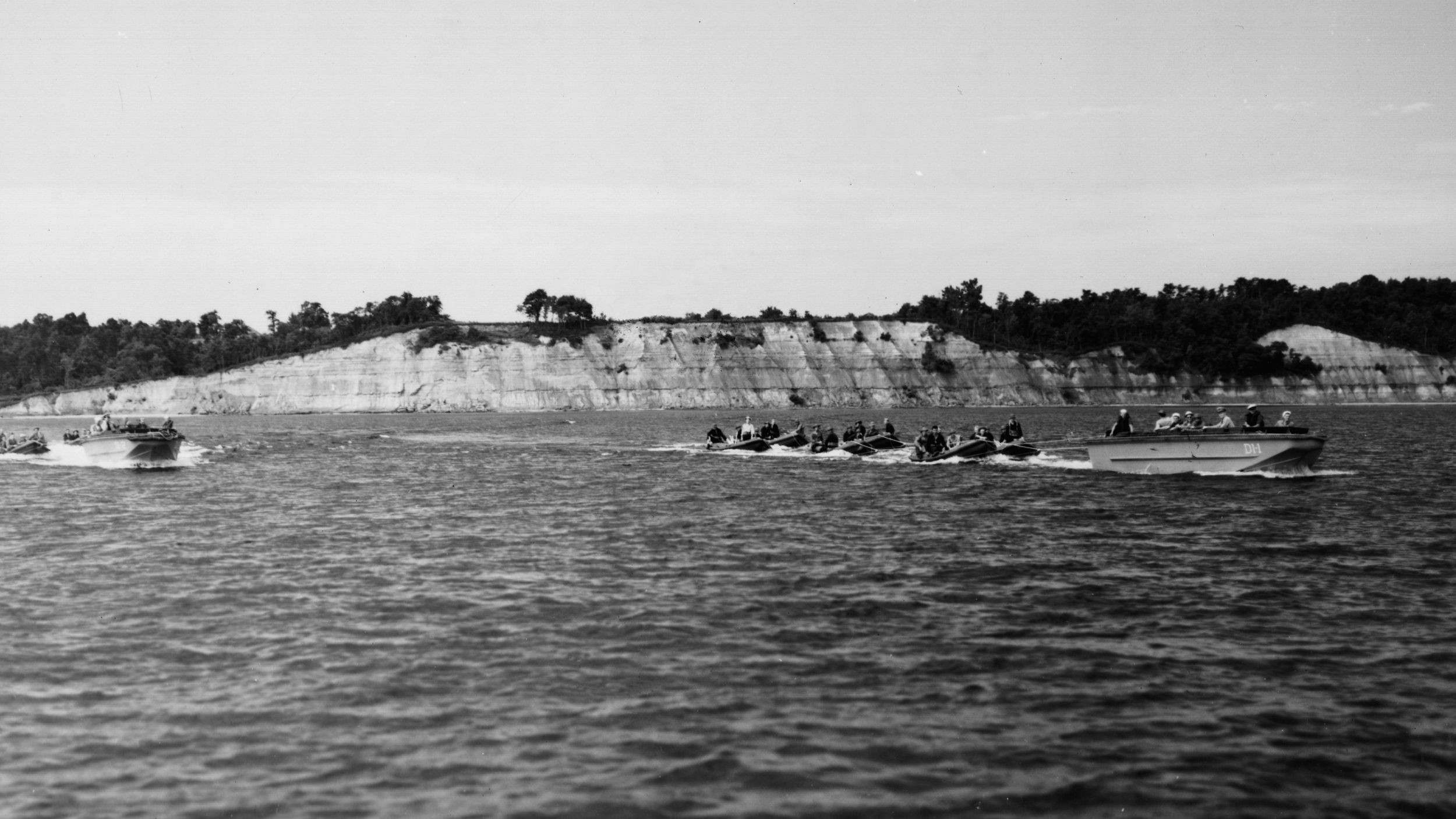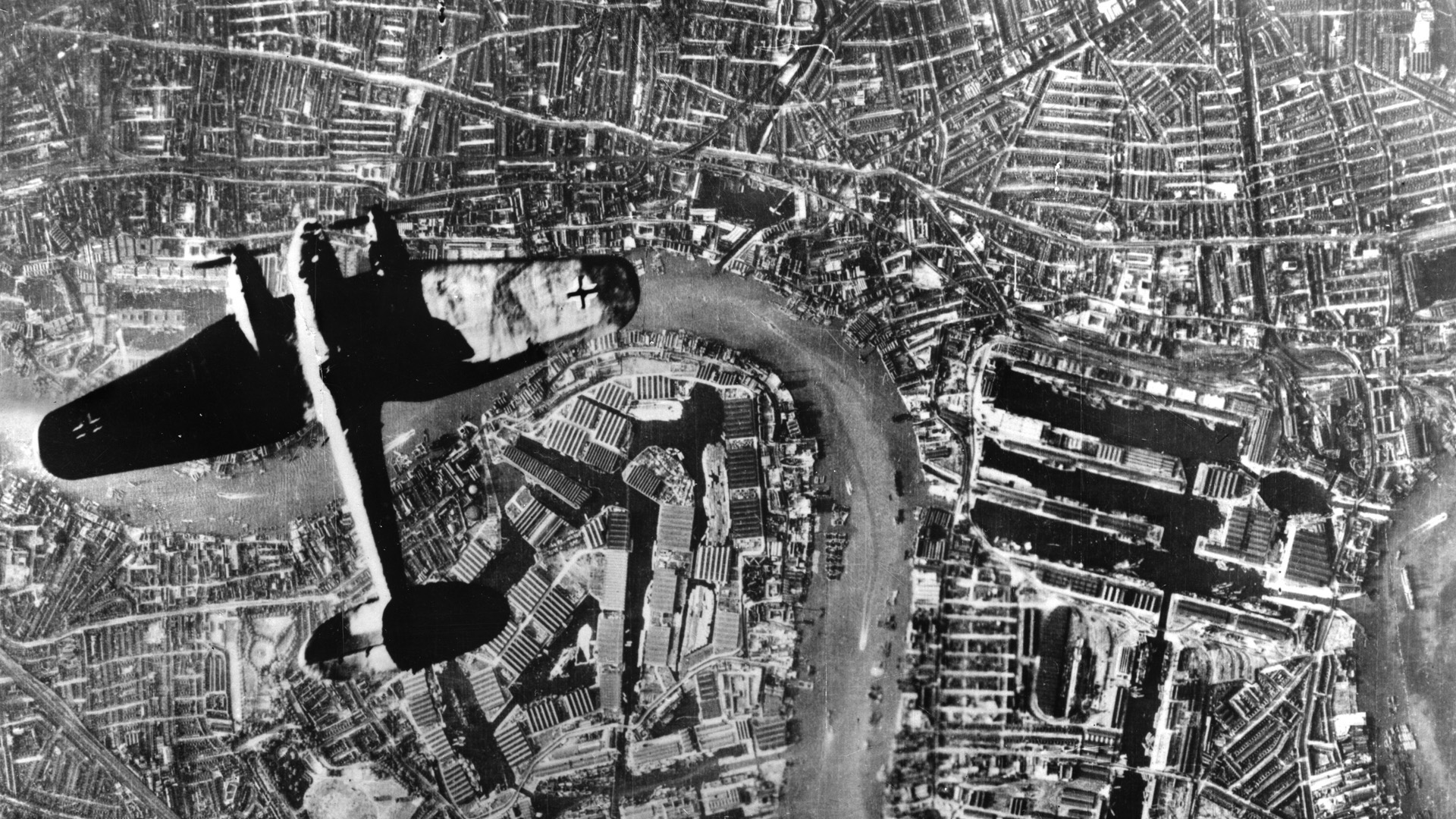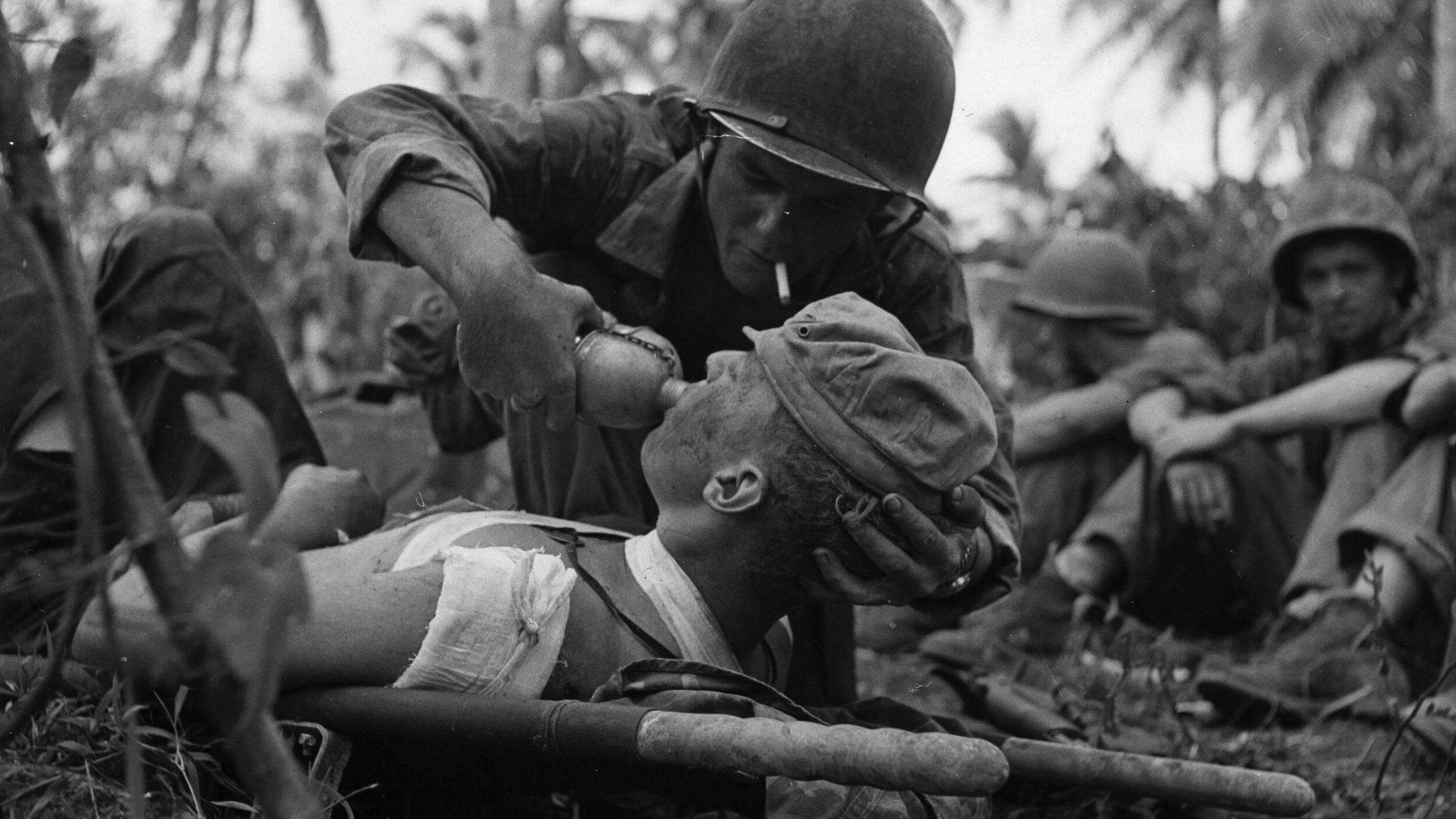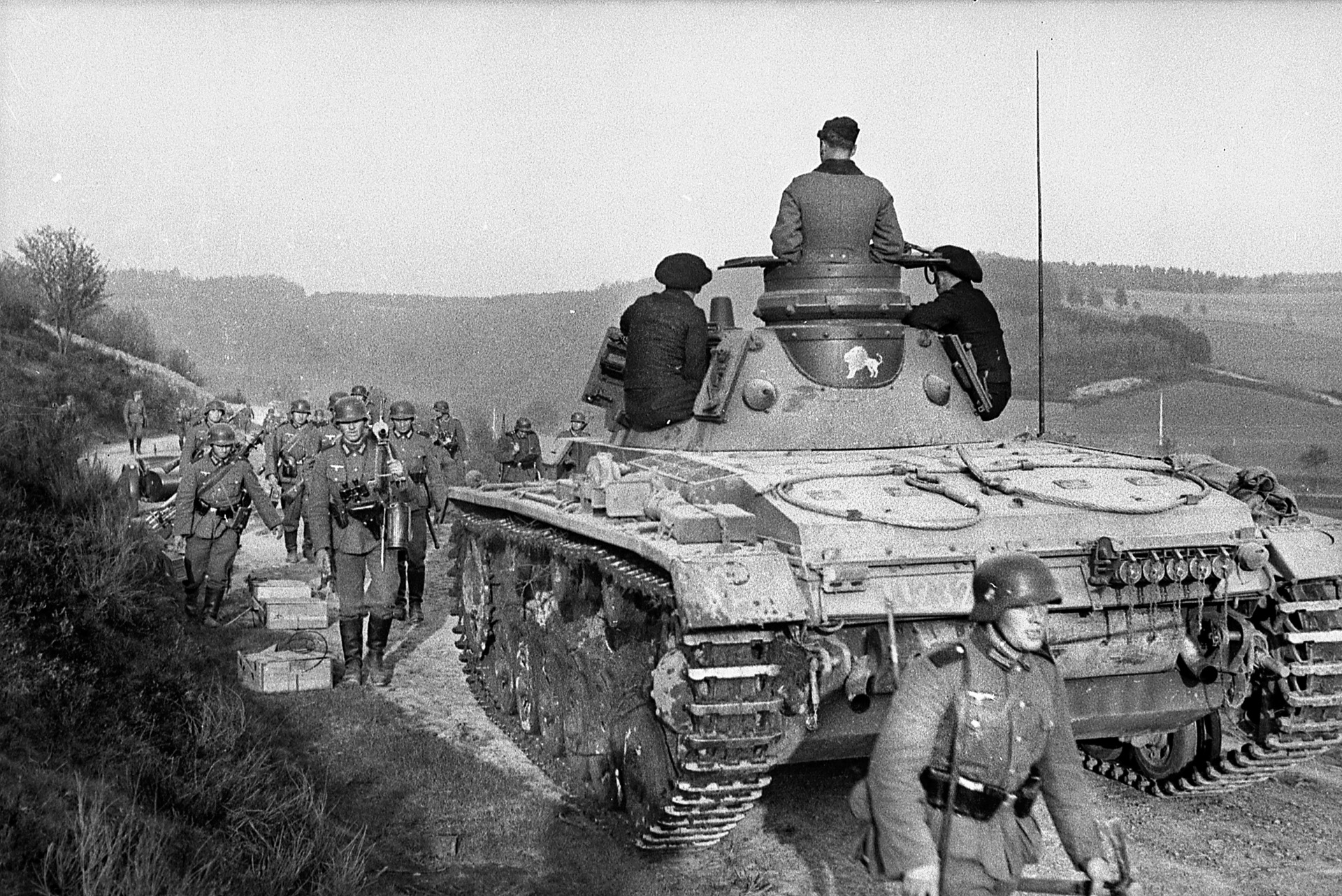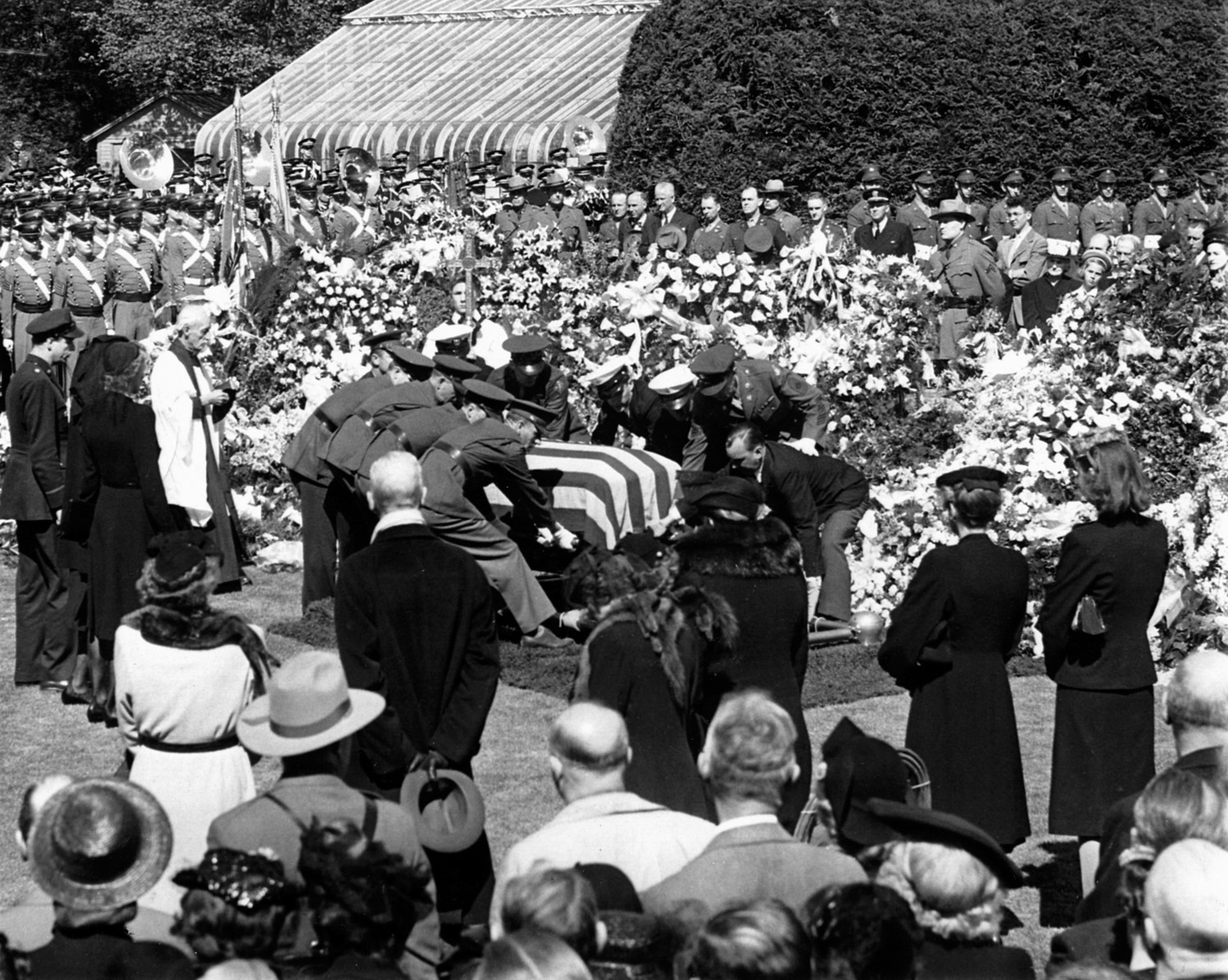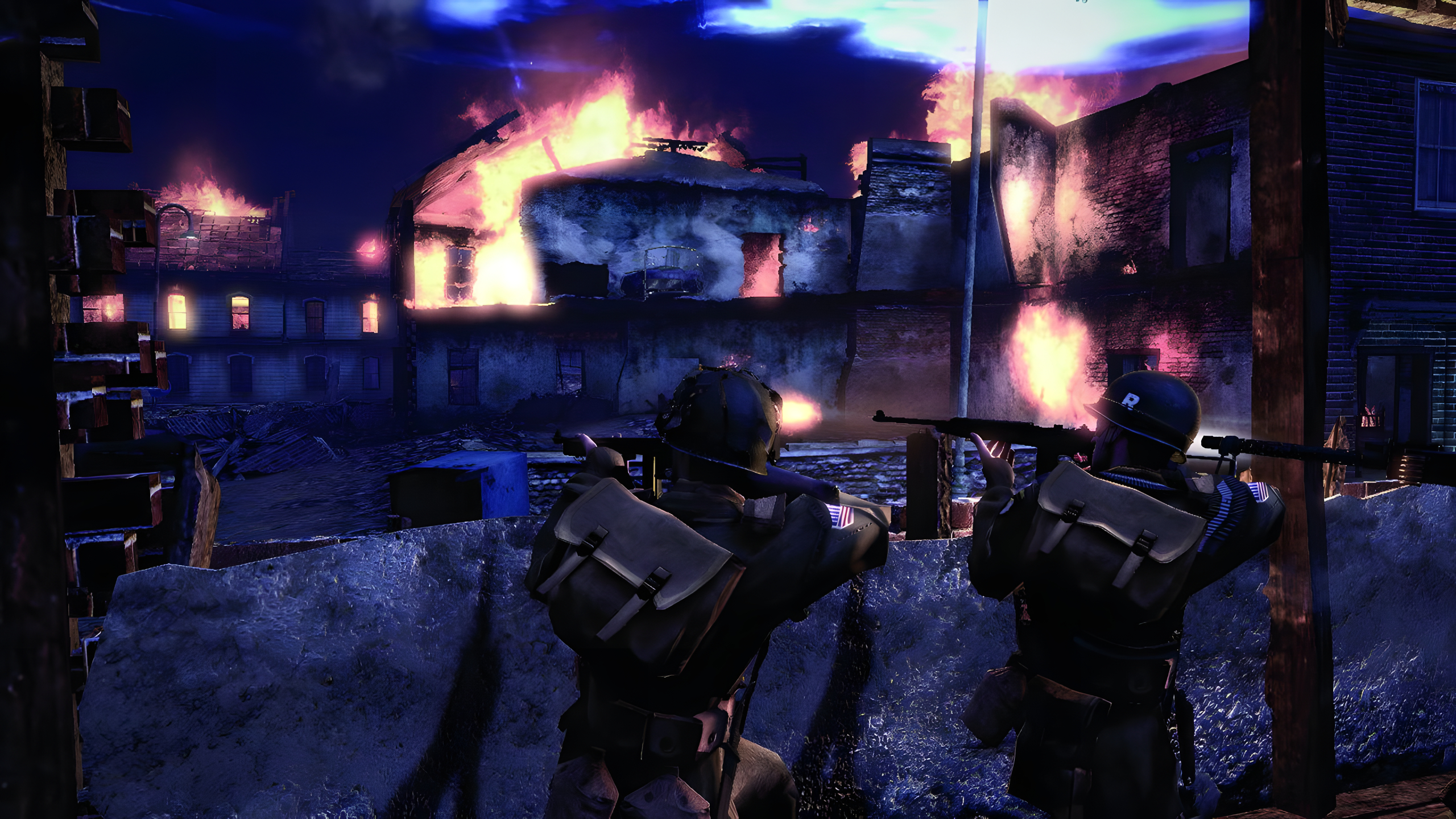By Michael D. Hull
One of the best known and most effective champions of the Allied cause in World War II was a dour, slightly built Iowa native wearing rimless glasses who never fired a shot in anger and collected no ribbons for gallantry.
He was 40-year-old Major Glenn Miller, a leading swing music innovator who topped the charts in peacetime America and whose U.S. Army Air Forces Band lifted the spirits of Allied servicemen and civilians for more than two years in the second half of the war. Lt. Gen. James H. Doolittle, the most famous U.S. airman of the war, told Miller, “Next to a letter from home, your organization is the greatest morale builder in the ETO.”
With its unique Miller “sound” and an extensive repertoire of crackling swing tunes and dreamy sentimental ballads, the AAF Band played at air bases and staging camps and on the air waves in Great Britain preceding and following the Allied invasion of Normandy on June 6, 1944. Its leader’s untimely death over the English Channel on a foggy day in December 1944 stunned millions and remains one of the enduring mysteries of the 20th century.
Born in the little southwestern Iowa town of Clarinda on Tuesday, March 1, 1904, Alton Glenn Miller was raised in Fort Morgan on the South Platte River in northeastern Colorado. He attended the University of Colorado for three semesters, receiving Ds in music and As in algebra. The studious young man then mastered the trombone, worked with local bands, and began to compile a library of arrangements.
In 1926, at the age of 22, he was invited to New York to join drummer Ben Pollack’s band as a trombone sideman and arranger. From that year until 1934, Miller played in the bands of Paul Ash, Red Nichols, Smith Ballew, and Benny Goodman, the “King of Swing,” who recognized the ambitious horn player as “a dedicated musician.”
Miller became friendly with Tommy and Jimmy Dorsey while working with them as recording studio and radio musicians. The energetic Miller helped organize and arrange for the Dorseys and the bands of Ballew and Ray Noble.
The 1930s brought the heyday of big dance bands, and Miller soon began to form his own aggregation in 1937. He was helped by Tommy Dorsey, a complex man of charm, legendary temper, and generosity. He invited Miller and his wife, Helen, to live with him at his mansion in Bernardsville, New Jersey, while the first band was struggling, and loaned him $5,000. Watching the new group perform at the Glen Island Casino in New Rochelle, New York, Dorsey predicted, “That’s gonna be the next [major] band.” But the band flopped.
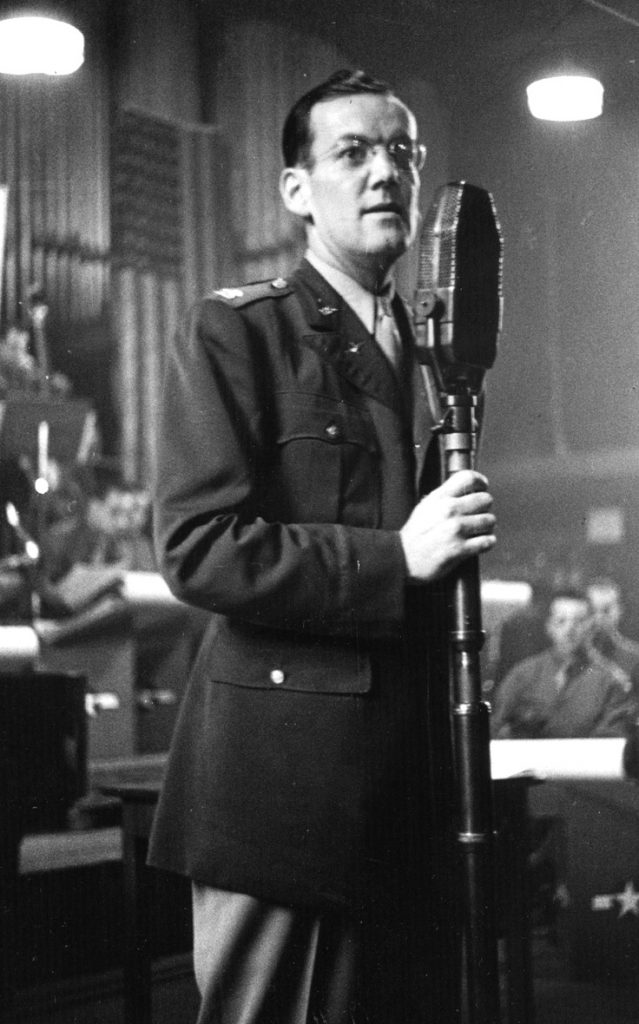
Miller persevered and put together a second group in 1938. He borrowed money from his wife’s parents, who remortgaged their home, and searched for a distinctive sound that would set the band apart from all the other groups competing for top chart ratings. After a substitute lead trumpeter in Ray Noble’s band could not reach the high notes, Miller discovered the unique reed voicing of a clarinet and four saxophones. He liked what he heard and built his band around the combination. The sound would prove to be a winner.
The band jockeyed with many other groups—the Dorseys, Goodman, Duke Ellington, Harry James, Kay Kyser, Paul Whiteman, Horace Heidt, Artie Shaw, Jimmy Lunceford, Guy Lombardo, and Fletcher Henderson—on music charts and in the Downbeat, Billboard, and Metronome polls, and the competition was fierce. Dorsey fans referred to Miller’s musicians as “the Boy Scouts,” while Tommy Dorsey, uneasy about his rival’s newfound success, started calling Miller “Old Klondike.” In 1940, while Europe was at war, the Miller band’s gross income reached $800,000. As his group drew more and more fans, Miller’s name became a household word.
Along with juggling an increasing number of concert and dance hall bookings all over the country, the Miller band boosted its following by way of regular radio programs. Millions tuned in to such shows as the thrice-weekly CBS concert series, Glenn Miller’s Moonlight Serenade, and another sponsored by the Chesterfield cigarette company.
The band was riding high when America went to war on December 8, 1941. The following year, eight months after the Pearl Harbor attack, the bespectacled bandleader decided unselfishly to shelve his phenomenal career and offer his services to the armed forces. At 38 years of age, he was too old to be drafted, but he decided to join the Army Air Forces. “It is not enough,” he explained, “for me to sit back and buy [war] bonds. The mere fact that I have had the privilege of exercising the rights to life and work as a free man puts me in the same position as every other man in uniform, for it was the freedom and the democratic way of life we have that enabled me to make strides in the right direction…. I’m going into this war and coming out some kind of hero.”
Miller formally left the Chesterfield radio show on September 24, 1942, and broke up his band. He was commissioned a captain the following month in the Army Specialist Corps, a short-lived program aimed at recruiting highly specialized people. Miller was one of 39 bandleaders who would serve in the forces during the war.
When the Specialist Corps was terminated after only two months, an Army Air Forces officer noticed Miller’s name on the list of personnel in need of assignments. The officer filed a request to have Miller transferred to the AAF, and the Army unwittingly let him go. The AAF was quick to recognize Miller’s potential as a unique morale builder and permitted him to form the 418th Army Air Forces Band, also known as the “I Sustain Wings “ Band. Its mission was to promote the AAF Training Command and to recruit aviation cadets and women for the Women’s Auxiliary Air Corps.
Miller picked some of the top musicians who were already in the service or whom he persuaded to join. Captain Miller also recruited some first-rate musicians from symphony orchestras and recording studios. They were to constitute one of the great musical aggregations of the 1940s.
After playing for aviation cadets training at Yale University in New Haven, Connecticut, in 1943, the Army Air Forces Band headed out on cross-country tours and raised millions of dollars for war bond drives. But it was not enough for Miller, who felt that the band was on a fast track to nowhere. He itched to take it overseas, but his requests were turned down.
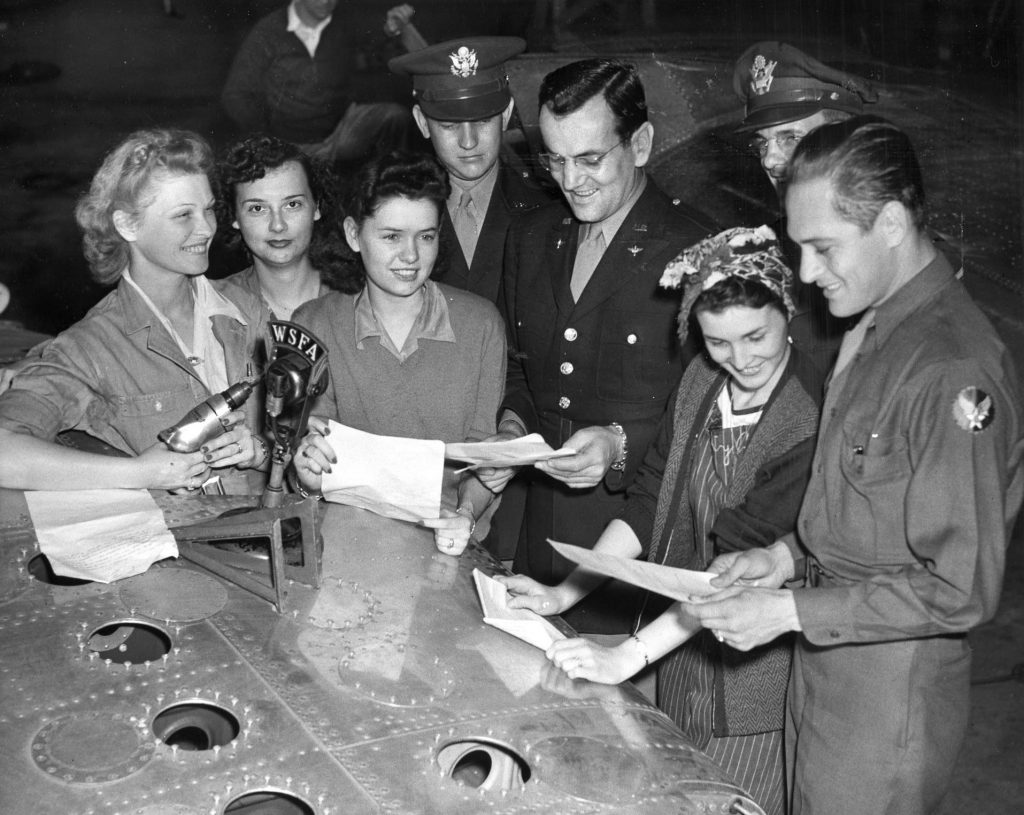
Through 1943 and into the following year, the band continued with its war bond tours, and its leader persisted in his efforts to have it sent across the Atlantic. The opportunity finally came in May 1944 when General Dwight D. Eisenhower, the supreme commander in Europe, created the Allied Expeditionary Forces Program, a radio network designed to entertain troops massing in England for the forthcoming invasion of France. Half of the programming was to be American, with the British, Canadians, and Free French providing the rest.
Troop morale was a concern of the genial Ike, and he was well aware of the great potential value of Miller’s music in supporting it, so he requested that the AAF Band be shipped to England. Miller was exhilarated and wasted no time in briefing his assembled musicians. Instruments were hastily packed, and the band arrived within two weeks in England in late spring. Now with the rank of major, Miller was at the helm of his biggest aggregation ever, comprising five trumpets, four trombones, six reeds, two drummers, 20 strings, two pianists, two basses, a guitar, a French horn, three arrangers, and five vocalists.
Miller’s chance to become a World War II hero came immediately. After their first night in London, some of his musicians wanted to stay there for a couple of days and rest after the grueling trip across the Atlantic. But their tireless leader insisted that they move on and play a concert at a Royal Air Force base near the town of Bedford, 40 miles northwest of London. That night, a German V-1 rocket demolished the quarters the band had left behind in London. Band manager Don Haynes attributed the near escape to the “Miller luck.”
The band was an instant toe-tapping hit in England among all who heard it: American soldiers and airmen; their British, Canadian, Free French, Czech, Polish, Dutch, and Norwegian allies; and civilians of all ages. The brisk swing tunes and sentimental numbers raised the spirits of millions of listeners, and many pronounced Miller’s AAF organization the best white band of all time.
Based in Bedford, the band traveled around England, playing for enthusiastic servicemen and women massed at Army camps and in canteens, airbase hangars, and open fields. Seventy-one concerts were listened to by almost a quarter of a million people in five and a half months. Miller reported that the greatest sound produced at the band’s appearances was “thousands of GIs reacting with an ear-splitting, almost hysterical yell after each number.” Listeners never got tired of such Miller standards as “In the Mood,” “Tuxedo Junction,” “Elmer’s Tune,” “American Patrol,” and a tune that had been sung originally in a 1942 film, Private Buckaroo, by the Andrews Sisters. When recorded by the Miller band with vocals by Tex Beneke, Marion Hutton, and the Modernaires, “Don’t Sit Under the Apple Tree with Anyone Else but Me” reached second place on the charts and became one of the most popular songs of World War II.
The concerts were broadcast over the American Armed Forces radio network, beamed at troops in England and continental Europe, and carried by the British Broadcasting Corporation.
Although he hated being in the air, Miller usually flew with his band to concerts around England, sometimes in dismal weather. But he cut back on his time in the air after his plane almost landed on top of an Eighth Air Force B-17 heavy bomber taking off at Hendon Airport near London. The Miller luck held.
After the tumultuous liberation of Paris in August 1944, Miller grew impatient to take his band to entertain Allied troops in France. While waiting for orders, he complained of repeated sinus attacks and other health problems that were probably the result of overwork and the band’s frantic schedule. Associates found him depressed, irritable, and exhausted, and band manager Haynes noted that Miller had lost weight and that his uniforms “didn’t fit him well at all; they merely hung on him.” In a letter written during the summer of 1944, the chain-smoking bandleader said, “I am totally emaciated, although I am eating enough. I have trouble breathing. I think I am very ill.”
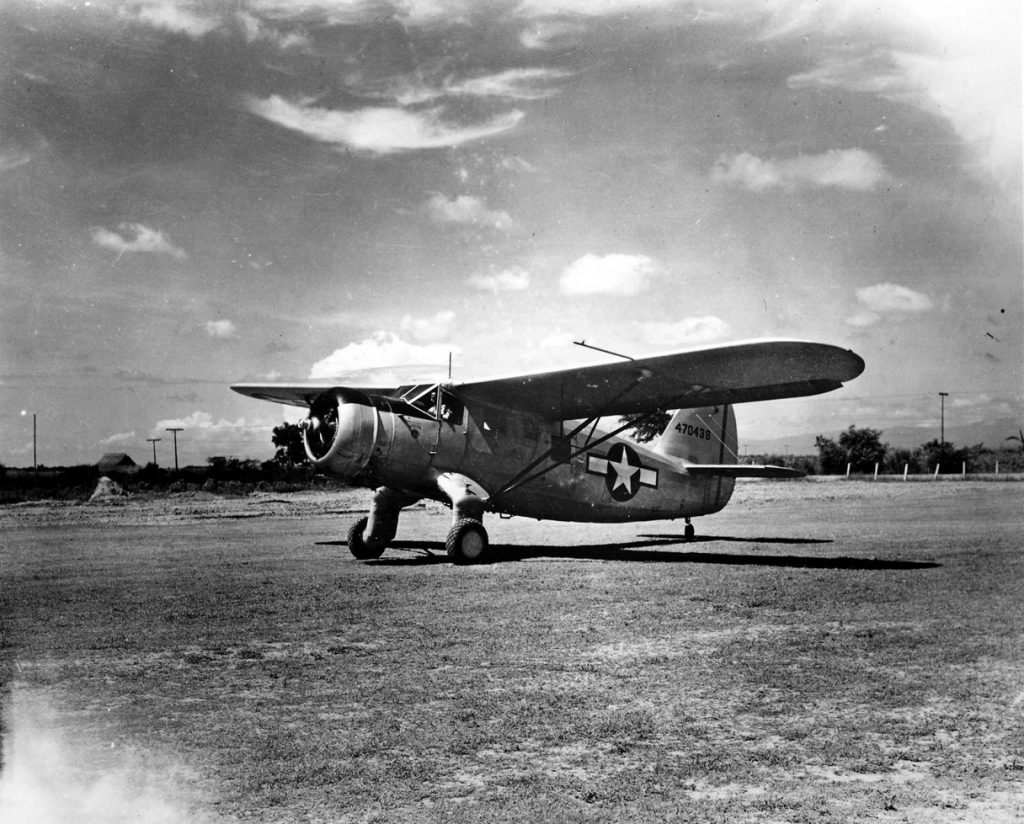
One night, Miller stayed up late discussing his postwar plans with George Voutsas, the director of his military radio programs. Miller said he wanted to form a new band and eventually retire to a ranch he had bought in California. “I don’t know why I spend time making plans like this,” the bandleader sighed. “You know, George, I have an awful feeling you guys are going to go home without me.”
Finally, in December, the orders came for Miller to take the AAF Band to France. Manager Haynes made plans to fly to Paris and arrange for the band’s arrival. The BBC had scheduled a Christmas Eve broadcast. Miller was anxious to get going and told Cecil Madden, a BBC producer, that he had also promised to attend a reception in the French capital. So, the bandleader decided to go in Haynes’s place and make the arrangements. At an officers’ club, he contacted Army Colonel Norman F. Baesell, who was planning to fly across the English Channel in a general’s private plane on the following day, December 15, 1944. Baesell agreed to take Miller along.
On that foggy, drizzly Friday afternoon, Miller, Baesell, and the pilot, Flight Officer F.O. Morgan, gathered at Twinwood Farm, a small RAF airstrip near Bedford. The temperature was a chilly 41 degrees Fahrenheit. The plane—a single-engine, high-wing, eight-seater Noorduyn Norseman C-64 cabin monoplane—warmed up on the runway. Miller was nervous about the small aircraft, but Colonel Baesell reminded him that Charles A. Lindbergh had made it across the Atlantic Ocean on one engine in 1927. “Hey,” Miller asked, “Where the hell are the parachutes?” Baesell joked, “What’s the matter, Miller? Do you want to live forever?” The bandleader was uneasy also about the weather because warnings had been posted.
Just before the three men boarded the Norseman, band manager Haynes said cheerily to Miller, “Happy landings and good luck. I’ll see you in Paris tomorrow.” Miller replied, “Thanks, Haynesie. We may need it.” The plane then rumbled along the runway, took off into the fog and rain, and was never seen again. The Miller luck had finally run out.
Three days later, Haynes took the AAF Band over to Paris, only to find out that Major Miller had not yet arrived. Stunned and distraught, Haynes waited in vain for some news. The Allied high command assumed that the Norseman’s engine had failed or that the plane had simply iced up and gone down in the Channel. No word came for several days, and the BBC interrupted a broadcast just after 6 pm on Christmas Eve to announce, “Major Glenn Miller, the well-known American bandleader, is reported missing. He left England by air for Paris nine days ago.”
At her home in New Jersey, Helen Miller was devastated when notified that her husband was missing. No search or inquiry into the tragedy was instituted because the Allied command was preoccupied with a much larger and more desperate problem. Early on the day after Miller had taken off, 25 German divisions had burst through the Ardennes Forest and chewed a 50-mile bulge in the American defense lines in Belgium and Luxembourg.
Friends and loyal fans of the popular bandleader were not satisfied with the official explanation, and wild rumors about his disappearance soon circulated. They said that the Norseman had been shot down by the Germans and that Miller, crippled and disfigured, was being hidden in a hospital somewhere; that he had died during a brawl in a Paris brothel; that Colonel Baesell, active in a black market delivery, had shot Miller and the pilot and landed the plane in France; or that the Allied high command had terminated Miller as a German spy. It was also suggested that Miller faked his death.
Eventually, the bizarre theories about Miller’s disappearance faded, and only the unsolved mystery remained. There was never any full explanation of what happened over the English Channel on December 15, 1944. The Miller saga slipped away into the mists of history until it was dramatically revived in 1954 with the release of a motion picture.
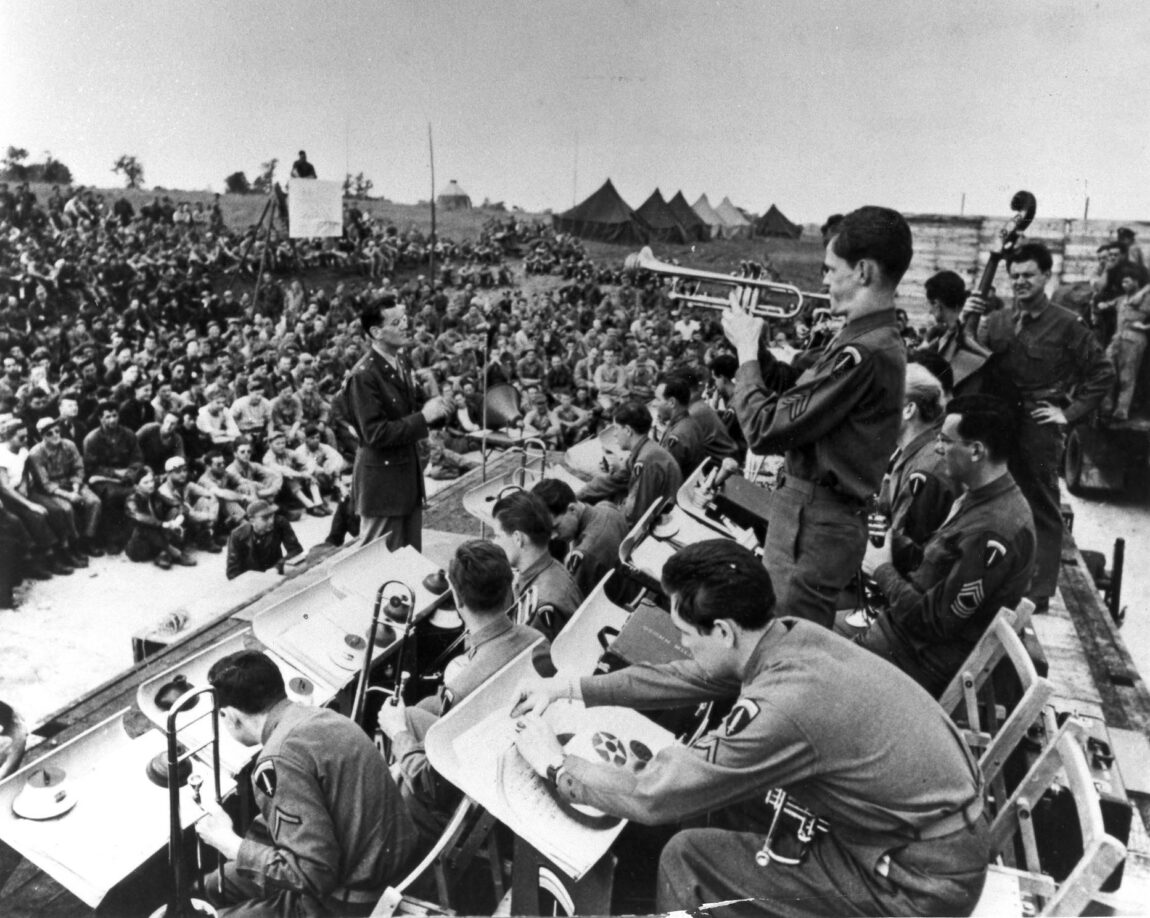
In Universal Studios’ sentimental The Glenn Miller Story, James Stewart convincingly portrayed the bandleader and June Allyson played his wife. Directed by Anthony Mann, it costarred Charles Drake, George Tobias, Harry Morgan, Frances Langford, Louis Armstrong, and Gene Krupa. While the film was highly popular, it played loosely with the facts, and Miller’s music was the star. Tommy Dorsey told a columnist, “That was no more The Glenn Miller Story than Jack in the Beanstalk.” The mystery of his disappearance then faded from the public consciousness, and it was not until the 1980s that some clues surfaced.
After seeing the James Stewart film in 1955, Fred Shaw, a Royal Air Force Bomber Command navigator in World War II, attempted to present to the press his own theory about the fate of the Norseman. He was rebuffed. Shaw moved to South Africa and in 1984 went to see the film again. This time he succeeded in getting his story picked up by the London newspapers.
Shaw reported that on December 15, 1944, he was aboard an Avro Lancaster heavy bomber returning from an aborted raid on Germany. Approaching the southern English coast, the bombardier jettisoned the payload, including a 4,000-pound “cookie” bomb, which detonated several feet above the English Channel. Shaw said that as he looked out to see the explosion, he spotted a small airplane—possibly the Norseman—flying below. A momentlater, he recalled, the rear gunner asked over the Lancaster’s intercom, “Did you see that kite [RAF slang for airplane] go in?” Shock waves from the explosion could have knocked the small plane out of the sky, Shaw suggested.
A member of the Glenn Miller Appreciation Society in England wrote to the Ministry of Defense and placed an advertisement in the RAF Association Journal seeking information that would confirm Shaw’s story. In response, the Lancaster’s pilot, Flying Officer Victor Gregory, said that he himself had seen nothing, but he confirmed the sightings by Shaw and the rear gunner. There was no debriefing because the bomber’s mission had been aborted, and Gregory did not report the incident to his superiors. “Don’t think me unsympathetic or callous,” he was reported as saying, “but when I heard of the plane going down, I would have said that he shouldn’t have been there. Forget him.” Gregory’s main concern was getting home safely from the raid.
Shaw’s story sparked an investigation by the Defense Ministry’s Air Historical Branch, but the true story of Glenn Miller’s disappearance failed to emerge. The Air Ministry report concluded that the Norseman and Lancasters could have crossed in flight, or they could have been miles apart.
The mystery deepened when the London Sunday Mirror front-paged an interview with salvage diver Clive Ward, who claimed he had discovered by chance the Norseman lying 80 feet down in the English Channel. Ward, a former policeman living in Southampton, Hampshire, said that in 1980, he located the plane about six and a half miles west of Le Touquet on the French northern coast. The Norseman showed “little or no damage,” he reported, “so it must have ditched deliberately.” Ward added “categorically” that the plane was empty and that there was no sign of its three occupants.
The true facts of Miller’s demise will probably never be known, and perhaps it does not matter. What is important is the musical legacy he left. The many enduring tunes played by his unrivaled band bolstered the spirits and hopes of millions in a stormy era, and, as predicted, he did in fact emerge from World War II as “some kind of hero.”
Author Michael D. Hull, a longtime contributor to WWII History, passed away recently. Mike had written on a variety of topics for more than 20 years. He resided in Enfield, Connecticut, and will be missed.
